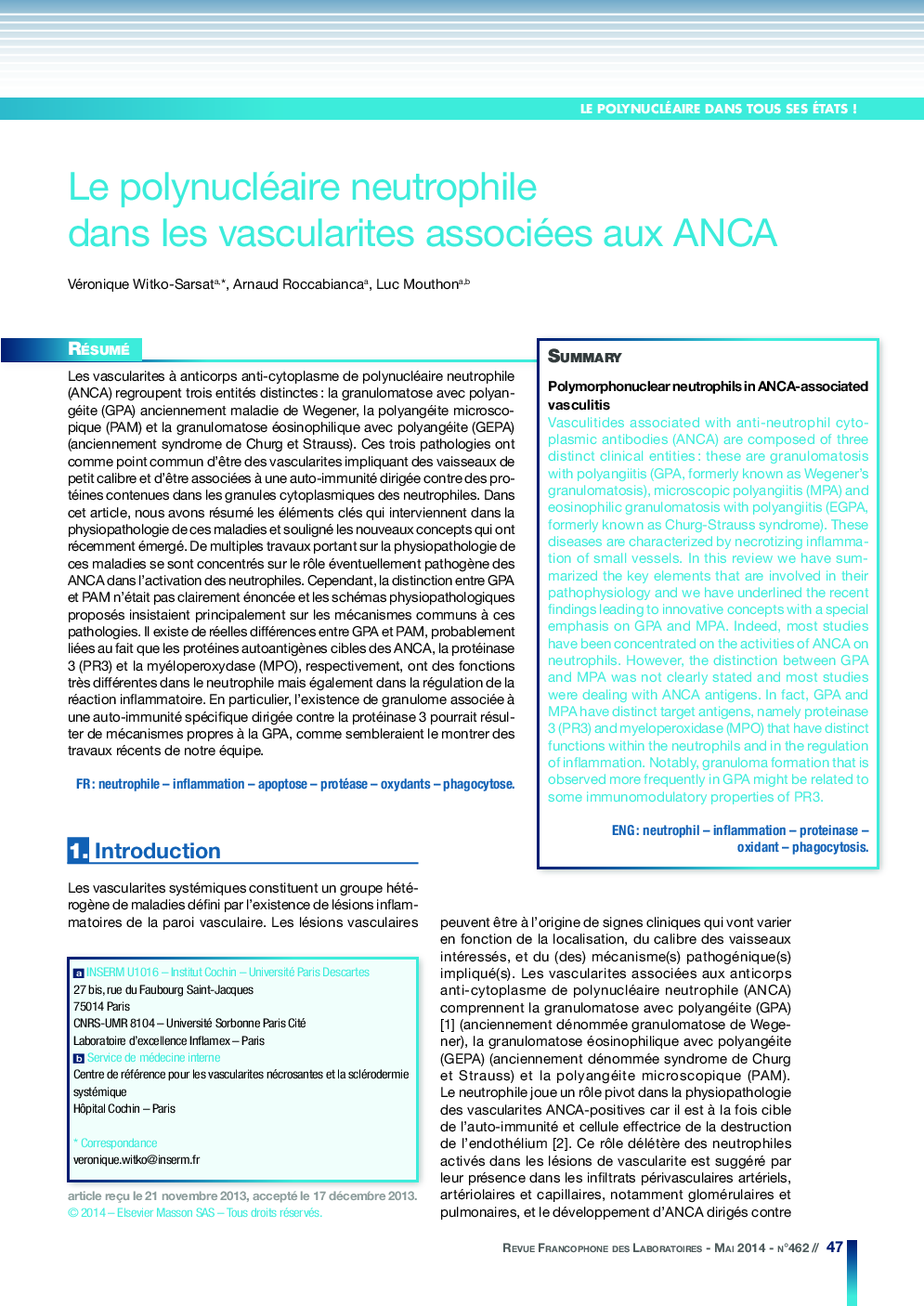| Article ID | Journal | Published Year | Pages | File Type |
|---|---|---|---|---|
| 7649300 | Revue Francophone des Laboratoires | 2014 | 12 Pages |
Abstract
Vasculitides associated with anti-neutrophil cytoplasmic antibodies (ANCA) are composed of three distinct clinical entities : these are granulomatosis with polyangiitis (GPA, formerly known as Wegener's granulomatosis), microscopic polyangiitis (MPA) and eosinophilic granulomatosis with polyangiitis (EGPA, formerly known as Churg-Strauss syndrome). These diseases are characterized by necrotizing inflammation of small vessels. In this review we have summarized the key elements that are involved in their pathophysiology and we have underlined the recent findings leading to innovative concepts with a special emphasis on GPA and MPA. Indeed, most studies have been concentrated on the activities of ANCA on neutrophils. However, the distinction between GPA and MPA was not clearly stated and most studies were dealing with ANCA antigens. In fact, GPA and MPA have distinct target antigens, namely proteinase 3 (PR3) and myeloperoxidase (MPO) that have distinct functions within the neutrophils and in the regulation of inflammation. Notably, granuloma formation that is observed more frequently in GPA might be related to some immunomodulatory properties of PR3.
Related Topics
Physical Sciences and Engineering
Chemistry
Analytical Chemistry
Authors
Véronique Witko-Sarsat, Arnaud Roccabianca, Luc Mouthon,
